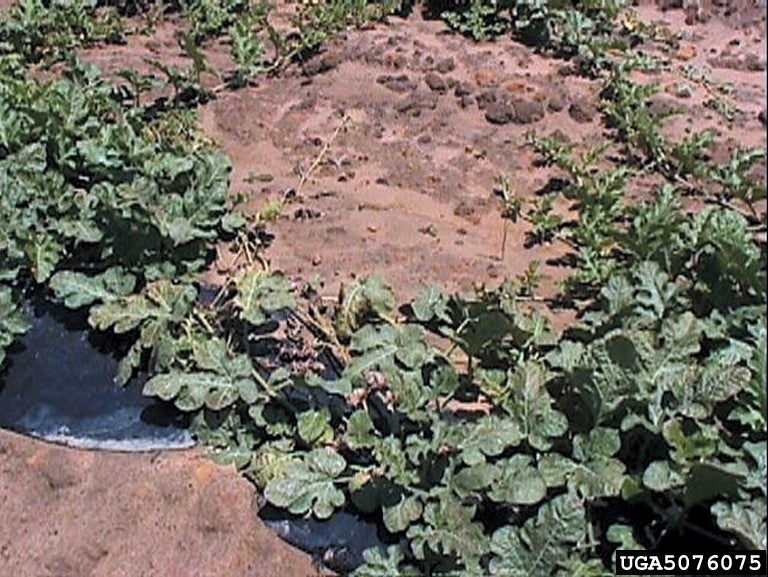Fusarium Wilt Of Cucurbits – Dealing With Fusarium Wilt In Cucurbit Crops

Fusarium is a fungal disease that afflicts cucurbits. Several diseases are the result of this fungus, each crop specific. Cucurbit fusarium wilt caused by Fusarium oxysporum f. sp. melonis is one such disease that attacks melons like cantaloupe and muskmelon. Another fusarium wilt of cucurbits that targets watermelon is caused by Fusarium oxysporum f. sp. niveum and also attacks summer squash, but not cantaloupe or cucumber. The following article contains information on recognizing fusarium symptoms in cucurbits and managing fusarium wilt in cucurbit crops.
Fusarium Symptoms in Cucurbits
Symptoms of fusarium wilt of cucurbits affected by F. oxysporum f. sp. niveum show early in development. Immature seedlings often damp off at the soil line. More mature plants may show early wilting only during the heat of the day, leading the gardener to believe the plant is suffering from drought stress, but will then die within a few days. During periods of rainfall, a white to pink fungal growth may appear on the surface of dead stems. To positively identify fusarium wilt in watermelon cucurbit crops, cut back the epidermis and bark slightly above the soil line on the main stem. If you see a light brown discoloration on the vessels, fusarium wilt is present. Fusarium oxysporum f sp. melonis affects only cantaloupe, Crenshaw, honeydew, and muskmelon. Symptoms are similar to those that afflict watermelon, however, streaks may appear on the outside of the runner at the soil line, extending up the vine. These streaks are first a light brown, but turn a tan/yellow followed by a dark brown as the disease progresses. Also, again, a white to pink fungal growth may appear on infected stems during periods of rainfall.
Transmission of Cucurbit Fusarium Wilt
In the case of either pathogen, the fungus overwinters in old infected vines, seeds, and in the soil as chlamydospores, thick walled asexual spores that can survive in the soil for over 20 years! The fungus can live off the roots of other plants such as tomatoes and weeds without causing disease. The fungus enters the plant through root tips, natural opening, or wounds where it plugs the water conducting vessels and results in wilt and eventual death. The incidence of the disease increases during warm, dry weather.
Managing Fusarium Wilt in Cucurbit Crops
Cucurbit fusarium wilt has no practical methods of control. If it infests the soil, rotate the crop to a non-host species. Plant fusarium resistant varieties, if possible, and only plant them once in the same garden space every five to seven years. If cultivating susceptible varieties of melon, only plant one time in the same garden plot every 15 years.
Gardening tips, videos, info and more delivered right to your inbox!
Sign up for the Gardening Know How newsletter today and receive a free copy of our e-book "How to Grow Delicious Tomatoes".

Amy Grant has been gardening for 30 years and writing for 15. A professional chef and caterer, Amy's area of expertise is culinary gardening.
-
 Grow ‘Karl Rosenfield’ Peony Plants For The Ultimate Frilly Border Beauties And Cut Flowers
Grow ‘Karl Rosenfield’ Peony Plants For The Ultimate Frilly Border Beauties And Cut FlowersFor frilly double magenta peony petals infused with a heady fragrance, grow ‘Karl Rosenfield’ peony plants. Here’s how to cultivate the ultimate plushy blooms
By Tonya Barnett
-
 10 Common Composting Problems That Can Spoil Your Garden Gold – Plus Easy Fixes
10 Common Composting Problems That Can Spoil Your Garden Gold – Plus Easy FixesLearn how to troubleshoot common composting issues before they ruin your stash – from bad smells and bugs to materials not breaking down as they should.
By Susan Albert